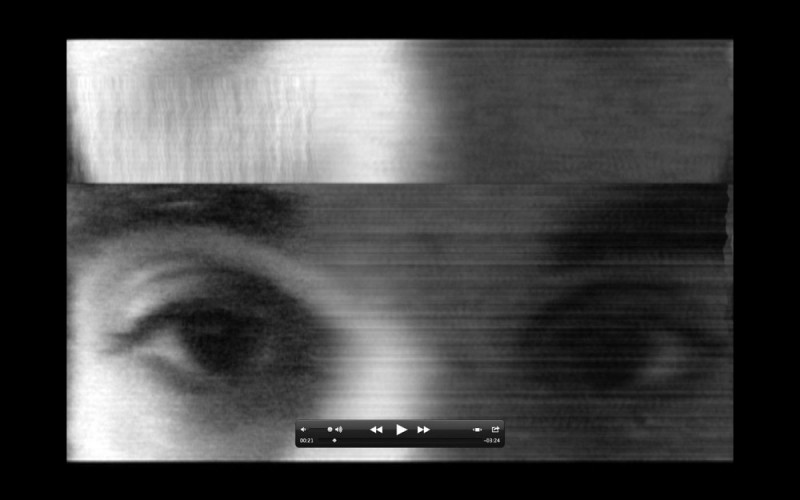
Digital media image by a Canadian high school student, featured in: Youth Practices in Digital Arts and New Media: Learning in Formal and Informal Settings.
New media art education can thrive in both informal, formal educational settings
But 'administrational support is crucial’, new book co-written by education professor Joanna Black finds
Digital art education can flourish equally well in both informal and formal education settings, a new book co-authored by Faculty of Education professor Joanna Black discovers. She co-wrote the book with Juan Carlos Castro, an assistant professor of art education at Concordia University and Ching-Chiu Lin, a postdoctoral research fellow in the department of curriculum and pedagogy at the University of British Columbia.
The writers of the book, Youth Practices in Digital Arts and New Media: Learning in Formal and Informal Settings, discuss their research on youth practices in new media in both formal (public school) and informal (after school programs, film schools, etc.) settings.
Published in February of this year, Youth Practices explores research conducted by the three authors in different informal and formal new media classes in Quebec, British Columbia and the prairies. Castro and Ching were working mostly with informal schools, outside of the public school system, while Black was examining digital art education in the public school system in the prairie provinces. The authors concentrate mostly on programs for secondary students. They look at programs for youth including film animation, graphic art, graphic design, digital photography, soundscapes and digital performance art.
The results were somewhat surprising, says Black, an associate professor of art education.
“It was a real learning experience. We had assumed prior to doing this that the informal learning situation would be a very different kind of learning situation and teachers would teach differently and students would learn differently.
“However, when we compiled our data together and we read our chapters…we were finding very similar things. The teachers taught in certain ways—there were a lot of parallels—and students learned in certain ways,” says Black.
The authors had assumed that informal settings would be the best vehicle for creative innovation in new media, “given the increasing standardization of formal education.”
“Instead, we have discovered that innovation in new media arts education can flourish in formal educational settings, as well as in informal contexts,” they wrote.
The three professors developed the book organically, Black says, after meeting up at a conference in 2013 and discussing their research. “We were all doing our separate research and realized we had parallels. So we didn’t plan the book from the outset.”
Black says there are obstacles to overcome for educators in digital arts in both formal and informal learning environments. For example, in formal environments, teachers must have good support from within the schools and from administrators. In informal settings, funding is always an issue in terms of purchasing the technology required.
The authors found that in both groups, professional practice and identity was key for the students. In the informal setting, that meant instructors posted their work online consistently, creating a community of practice and then encouraging their students to do the same. In the public system, meanwhile, media classes had extensive websites controlled by teachers and students were often expected to post their work.
Another important aspect to the success of these programs, both in formal and informal settings, was that “students’ interests, their values, were part of the process of digital making.
“That’s really important,” says Black. “It was, ‘Let’s take your background, your interests, your learning onto what you are doing and combine it with digital practices so it becomes much more meaningful.’”
Thirdly, new media curricula which was connected to the larger community was more successful. That meant, for example, bringing professional filmmakers into classes, or taking students outside their school to visit a working studio.
“That happened consistently throughout Canada,” says Black. “It wasn’t just insular—the learning.” When students learn from new media professionals working in the community, it can be “huge” for their confidence as developing artists, she says.
The authors also found that it was paramount for educators in both informal and formal settings to have the latitude to shape curricula based on current developments in new media.
A significant part of the research was done on children who were at-risk. But through digital arts and new media, they flourished, Black and the others found.
“Some of these students were really marginalized and they have gone on to new media careers, and they have won international awards. It is very significant.”
Black says it is important for teachers and administrators to foster these programs and support these students because it can really change lives.
The authors concluded that there is “more that connects innovative informal and formal new media art programs for youth than separates them.”
Black says that one of the key messages from the book is that it is important for educators and administrators to provide strong leadership regarding art programs; furthermore they must be able to be flexible to “bend for these changing times within the 21st century.”
“I think that the administrational support is crucial and flexibility is absolutely crucial. Working in new media, youths are really motivated and are dedicated workers. The students certainly respond well producing technically skilled, creative, and imaginative digital works.”
To purchase the book, please visit Palgrave MacMillan.











